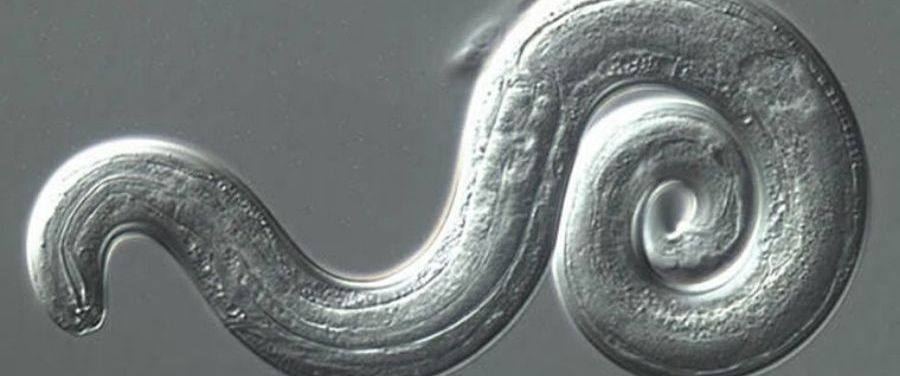WHAT IS ANGIOSTRONGYLUS CANTONENSIS?
Angiostrongylus cantonensis is a parasitic nematode, which can cause severe gastrointestinal or central nervous system disease in humans, depending on the species. It is also known as rat lungworm as nematode commonly resides in the pulmonary arteries of rats. It causes eosinophilic meningitis and is prevalent in tropical pacific islands and Southeast Asia.
The recognized distribution of parasite has been increasing over the time and infections have been identified in other areas, including the Caribbean, Africa and United States.
The incubation period of angiostrongylus cantonensis averages one to three weeks, but has ranged from one day to greater than six weeks. Illness from angiostrongylus cantonensis usually lasts between two to eight weeks but can last longer.
Individuals show the symptoms of bacterial meningitis, such as neck stiffness, nausea, vomiting and headaches that are often global and severe. Abnormal sensations of the arms and legs also can occur. Sometimes the eyes can be affected.
When the patients of this disease are tested for bacterial meningitis by taking a sample of the fluid that surrounds the brain, the fluid doesn’t show high levels of the cells that help fight off bacterial infections.
Instead, other cell type, called eosinophils are found (this is known as eosinophilic meningitis), though these cells may be absent early and late in the course of disease.
Most infections of angiostrongylus cantonensis resolve spontaneously over time without specific treatment because the parasite can not survive for long in human bodies. Thus, serious complications with this disease can rarely occur, leading to neurological dysfunction or death.
HOW IS RAT LUNGWORM TRANSMITTED?
People who eat raw, uncooked or under-cooked snails or slugs may get infected with this parasite. In some cultures, snails or slugs are commonly eaten. Some children have gotten infected by swallowing snails or slugs.
Individuals may also get infected by accident, by eating raw produce (such as lettuce) that contains a small snail or slug or part of one.
Certain animals such crabs, frogs, freshwater shrimp have been found to be infected with larvae of the parasite. It’s also possible that eating under-cooked or raw animals that are infected could result in people becoming infected. Though, the evidence for this are not as clear as for eating infected snails and slugs.
Note : Fishes don’t spread this parasite. An infected person can’t infect other people.
WHAT ARE THE SYMPTOMS OF ANGIOSTRONGYLUS CANTONENSIS?
Some individuals infected with this parasite don’t have any symptoms — or some have only mild symptoms that don’t last very long.
Sometimes the infection by the parasite causes a rare type of meningitis (eosinophilic meningitis). Signs and symptoms of angiostrongylus cantonensis infection may include —
- Headache
- Stiff neck
- Nausea
- Vomiting
- Fatigue
- Photophobia – sensitivity to light
- Muscle weakness
- Constipation
- Blindness
- Tingling or painful feelings in the skin
- Low-grade fever
WHAT TO DO IF GET INFECTED WITH THIS PARASITE?
You should see your doctor or health care provider, who will examine symptoms of infection by the parasite. Doctor may ask about the symptoms, travel and exposures you’ve had.
Doctor will also recommend some blood tests, as well as tests for meningitis.
WHAT ARE THE RISK FACTORS OF ANGIOSTRONGYLUS CANTONENSIS?
Risk factors of infection with A. Cantonensismay include —
- Ingestion of raw or under-cooked infected snails or slugs
- Pieces of snails and slugs that are accidentally chopped up in vegetable juices, vegetables or salads
- Foods contaminated by the slime of infected snails or slugs
It’s also possible that ingestion of raw or under-cooked transport hosts; such as land crabs, freshwater shrimp, frogs, can result in human infection, though this is less certain. Additionally, the contamination of hands during the preparation of uncooked infected snails or slugs could lead to ingestion of the parasite.
ANGIOSTRONGYLUS CANTONENSIS INFECTION PREVENTION AND CONTROL
Prevention of A. cantonensis infections involves educating persons residing in or traveling to areas where the parasite is found about not ingesting raw or under-cooked snails and slugs, frogs, land crabs, freshwater shrimp and monitor lizards, or potentially contaminated vegetables, or vegetable juice.
Removing slugs, snails and rats found near gardens and houses should also help to reduce the risk of infection caused by the parasite. Thoroughly washing utensils and hands after preparing raw snails or slugs is also recommended. Vegetables should be thoroughly washed if eaten raw.
RELATED ARTICLES:
- Kissing Bug Bite: Identification, Treatment and Prevention
- Hypothyroidism : Symptoms, Diagnosis and Treatment
- Glioblastoma Multiforme Brain Tumor – Symptoms, Diagnosis and Treatment
- Stem Cells : Types, Uses and Controversies
- Bird Flu (Avian Flu) : Causes, Symptoms and Prevention
- Nipah Virus Infection : Causes, Symptoms, Prevention and Treatments
- Zika Virus Disease : Causes, Symptoms and Treatments
- Ebola Virus Disease : Causes, Symptoms and Treatments
